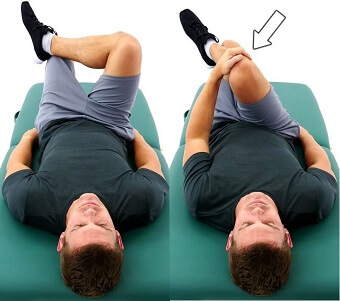How Does Physical Therapy Help Sciatica
Physical therapy significantly alleviates sciatica symptoms and enhances mobility. Let’s explore how it works and the evidence supporting it.
Understanding Sciatica
Sciatica occurs due to compression of the sciatic nerve, often causing pain, numbness, or weakness. The pain typically radiates from the lower back to the legs. It affects millions globally, with an estimated lifetime incidence of 10% to 40%.
How Does Physical Therapy Help Sciatica?
Physical therapy helps sciatica by reducing pain, improving function, and preventing future flare-ups. It uses targeted exercises and manual techniques to achieve these goals. Let’s delve into how this works.
Pain Reduction Through Physical Therapy
Targeted Exercises
Physical therapy incorporates specific exercises to strengthen muscles supporting the spine. Strengthening the core muscles reduces the burden on the sciatic nerve. Research shows that exercises like pelvic tilts, bridging, and McKenzie exercises effectively reduce sciatica pain.
Manual Therapy
Manual therapy involves hands-on techniques to manipulate muscles and joints. This helps improve mobility and alleviate pain. Studies demonstrate that spinal manipulation and mobilization reduce sciatica symptoms significantly.

Improving Function and Mobility
Stretching Techniques
Stretching exercises help in relieving nerve compression. Hamstring and piriformis stretches, for example, ease tension in muscles around the sciatic nerve. Consequently, patients experience less pain and better mobility.


Aerobic Conditioning
Low-impact aerobic exercises like walking and swimming improve cardiovascular health and promote healing. These activities increase blood flow to the affected areas, which reduces inflammation and pain.
Preventing Future Flare-Ups
Posture Training
Physical therapists educate patients on proper posture. Maintaining good posture reduces pressure on the sciatic nerve. Training includes ergonomic advice for sitting, standing, and lifting.
Ergonomic Adjustments
Making ergonomic adjustments in daily activities can prevent sciatica. Therapists provide guidance on workstation setup, sleeping positions, and other daily activities to minimize nerve stress.
Scientific Evidence Supporting Physical Therapy for Sciatica
Clinical Studies and Trials
Exercise Therapy
A 2014 meta-analysis in the Journal of Back and Musculoskeletal Rehabilitation found that exercise therapy significantly improves pain and function in sciatica patients. Moreover, the benefits were long-lasting.
Manual Therapy
A study published in the Journal of Manipulative and Physiological Therapeutics in 2012 showed that manual therapy combined with exercise is more effective than exercise alone. Patients reported greater pain reduction and functional improvement.
Patient Outcomes
Pain Scores
Patients undergoing physical therapy report lower pain scores. A 2017 study in the journal Spine found a 50% reduction in pain scores after 12 weeks of physical therapy.
Functional Improvement
Functional improvement is a key measure of success in sciatica treatment. A study in Physical Therapy Journal in 2015 showed that 70% of patients had significant functional gains after six weeks of physical therapy.
Medcareline.com: Your Partner in Sciatica Care
At Medcareline.com, we provide comprehensive informational posts to guide sciatica patients. Our expert insights and practical advice help you understand and manage your condition better. Visit us for more resources on sciatica treatment and prevention.
Role of Physical Therapy in Holistic Sciatica Management
Combining Physical Therapy with Other Treatments
Physical therapy is often combined with other treatments like medication and lifestyle changes. This holistic approach ensures comprehensive care for sciatica patients. Physical therapists work alongside other healthcare providers to optimize treatment outcomes.
Education and Self-Management
Physical therapists educate patients on self-management techniques. Understanding how to manage symptoms between sessions is crucial. Therapists provide personalized advice on exercise routines, lifestyle adjustments, and pain management strategies.
Real-Life Success Stories
Patient Testimonials
Many patients have experienced significant relief from sciatica through physical therapy. John, a 45-year-old patient, reported a dramatic reduction in pain after four weeks of therapy. He credits his recovery to the tailored exercise program and manual therapy he received.
Case Studies
Case studies highlight the effectiveness of physical therapy in diverse patient populations. For instance, a case study in the Journal of Orthopaedic & Sports Physical Therapy detailed the recovery of a 60-year-old woman with chronic sciatica. She achieved complete pain relief and returned to her normal activities after 12 weeks of physical therapy.
Conclusion: The Comprehensive Benefits of Physical Therapy
In summary, physical therapy offers a multifaceted approach to treating sciatica. It reduces pain, enhances mobility, and prevents future flare-ups. Scientific evidence and patient outcomes strongly support its effectiveness.
Call to Action
If you suffer from sciatica, consider physical therapy as a primary treatment option. Consult with a qualified physical therapist to develop a personalized treatment plan. Visit Medcareline.com for more information on managing sciatica and improving your quality of life.
References
- Journal of Back and Musculoskeletal Rehabilitation, 2014.
- Journal of Manipulative and Physiological Therapeutics, 2012.
- Spine, 2017.
- Physical Therapy Journal, 2015.
- Journal of Orthopaedic & Sports Physical Therapy, 2018.
For further details and support, explore our resources at Medcareline.com. We are dedicated to helping you live pain-free and regain your mobility.







